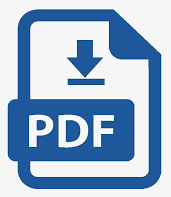Relación entre la composición corporal, el perfil fuerza-velocidad y las lesiones en futbolistas juveniles
Palabras clave:
composición corporal, fuerza-velocidad, lesiones deportivas, futbolistas jóvenesResumen
Introducción: En el rendimiento deportivo, comprender cómo la composición corporal influye en el perfil de fuerza-velocidad y las lesiones, puede proporcionar estrategias de entrenamiento destinadas a maximizar el rendimiento.
Objetivo: Correlacionar la composición corporal, el perfil de fuerza-velocidad y las lesiones deportivas de futbolistas juveniles.
Métodos: Investigación cuantitativa, descriptiva-correlacional, de tipo transversal, con un proceso de intervención delimitado (agosto-septiembre 2024). Los participantes fueron 70 jugadores (edad: 15,37 ± 3,17). La muestra fue clasificada por las categorías sub-13 (n = 22), sub-15 (n = 22) y sub-19 (n = 26). Se usó la técnica de la cineantropometría (masa muscular, grasa y ósea), y para el perfil de fuerza-velocidad se aplicó My Jump Lab 3.0.
Resultados: Existe una correlación fuerte entre velocidad y potencia (r = 0,91), y una correlación media negativa entre déficit de fuerza y fuerza en las edades de 11-15 años (sub-13, r = -0,52; sub-15, r = -0,62). Existe una correlación media negativa en las edades de 11-15 años (sub-13, sub-15) entre el porcentaje de masa muscular con el déficit de fuerza (p < 0,05, r = -0,61).
Conclusiones: El estudio de las tres variables estudiadas evidenció una correlación media negativa entre la masa muscular y el déficit de fuerza (sub-13 y sub-15), así como el índice de lesiones. En cambio, en la categoría sub-19 existió una correlación media negativa entre el porcentaje de grasa y la potencia. En cuanto al porcentaje de masa ósea, no existió ninguna correlación con el perfil fuerza-velocidad.
Descargas
Citas
1. Kelly SJ, Watsford ML, Austin DJ, et al. Differences in physical capacity between junior and senior Australian footballers. J Strength Cond Res. 2017;31(11):3059-66. DOI: 10.1519/JSC.0000000000001720.
2. Zhang Q, Dellal A, Chamari K, et al. The influence of short sprint performance, acceleration, and deceleration mechanical properties on change of direction ability in soccer players—A cross-sectional study. Front Physiol. 2022;13:1027811. DOI: 10.3389/fphys.2022.1027811.
3. Roso-Moliner A, Gonzalo-Skok O, Villavicencio-Álvarez VE, et al. Analyzing the Influence of Speed and Jumping Performance Metrics on Percentage Change of Direction Deficit in Adolescent Female Soccer Players. Life (Basel). 2024;14(4):466. DOI: 10.3390/life14040466.
4. Mainer-Pardos E, Villavicencio Álvarez VE, Moreno-Apellaniz N, et al. Effects of a neuromuscular training program on the performance and inter-limb asymmetries in highly trained junior male tennis players. Heliyon. 2024;10(5):e27081. DOI: 10.1016/j.heliyon.2024.e27081.
5. Manson SA, Low C, Legg H, et al. Vertical force-velocity profiling and relationship to sprinting in elite female soccer players. Int J Sports Med. 2022;42(10):911-6. DOI: 10.1055/a-1345-8917.
6. Gadea-Uribarri H, Lago-Fuentes C, Bores-Arce A, et al. External Load Evaluation in Elite Futsal: Influence of Match Results and Game Location with IMU Technology. J Funct Morphol Kinesiol. 2024;9(3):140. DOI: 10.3390/jfmk9030140.
7. Villanueva-Guerrero O, Gadea-Uribarri H, Villavicencio Álvarez VE, et al. Relationship between Interlimb Asymmetries and Performance Variables in Adolescent Tennis Players. Life (Basel). 2024;14(8):959. DOI: 10.3390/life14080959.
8. Moreno-Apellaniz N, Villanueva-Guerrero O, Villavicencio-Álvarez VE, et al. Impact of Lower-Limb Asymmetries on Physical Performance Among Adolescent Female Tennis Players. Life (Basel). 2024;14(12):1561. DOI: 10.3390/life14121561.
9. Hernández-Mosqueira C, Castillo-Quezada H, Peña-Troncoso S, et al. Perfil Antropométrico de Futbolistas profesionales de acuerdo a la posición ocupada en el Campo de Juego. Retos. 2022;44:702-8. DOI: 10.47197/retos.v44i0.90770.
10. Bernal-Orozco MF, Posada-Falomir M, Quiñónez-Gastélum CM, et al. Anthropometric and body composition profile of young professional soccer players. J Strength Cond Res. 2020;34(7):1911-23. DOI: 10.1519/JSC.0000000000003416.
11. Bongiovanni T, Trecroci A, Cavaggioni L, et al. Importance of anthropometric features to predict physical performance in elite youth soccer: A machine learning approach. Res Sports Med. 2021;29(3):213-24. DOI: 10.1080/15438627.2020.1809410.
12. Calero-Morales S, Villavicencio-Alvarez VE, Flores-Abad E, et al. Pedagogical control scales of vertical jumping performance in untrained adolescents (13–16 years): research by strata. PeerJ. 2024;12:e17298. DOI: 10.7717/peerj.17298.
13. Ben Hassen D, Zghal F, Peyrot N, et al. Jump and sprint force velocity profile of young soccer players differ according to playing position. J Sports Sci. 2023;41(21):1915-26. DOI: 10.1080/02640414.2024.2307768.
14. Fernández-Galván LM, Jiménez-Reyes P, Cuadrado-Peñafiel V, et al. Sprint performance and mechanical force-velocity profile among different maturational stages in young soccer players. Int J Environ Res Public Health. 2022;19(3):1412. DOI: 10.3390/ijerph19031412.
15. Jiménez-Reyes P, García-Ramos A, Cuadrado-Peñafiel V, et al. Differences in sprint mechanical force–velocity profile between trained soccer and futsal players. Int J Sports Physiol Perform. 2019;14(4):478-85. DOI: 10.1123/ijspp.2018-0402.
16. Leão C, Silva AF, Badicu G, et al. Body Composition Interactions with Physical Fitness: A Cross-Sectional Study in Youth Soccer Players. Int J Environ Res Public Health. 2022;19(6):3598. DOI: 10.3390/ijerph19063598.
17. Spehnjak M, Gušić M, Molnar S, et al. Body composition in elite soccer players from youth to senior squad. Int J Environ Res Public Health. 2021;18(9):4982. DOI: 10.3390/ijerph18094982.
18. Toselli S, Mauro M, Grigoletto A, et al. Assessment of body composition and physical performance of young soccer players: Differences according to the competitive level. Biology (Basel). 2022;11(6):823. DOI: 10.3390/biology11060823.
19. Clemente FM, Clark CCT, Leão C, et al. Exploring relationships between anthropometry, body composition, maturation, and selection for competition: A study in youth soccer players. Front Physiol. 2021;12:651735. DOI: 10.3389/fphys.2021.651735.
20. Sebastiá-Rico J, Soriano JM, González-Gálvez N, et al. Body composition of male professional soccer players using different measurement methods: a systematic review and meta-analysis. Nutrients. 2023;15(5):1160. DOI: 10.3390/nu15051160.
21. Thibault R, Genton L, Pichard C. Body composition: why, when and for who? Clin Nutr. 2012;31(4):435-47. DOI: 10.1016/j.clnu.2011.12.011.
22. Morin JB, Samozino P. Interpreting power-force-velocity profiles for individualized and specific training. Int J Sports Physiol Perform. 2016;11(2):267-72. DOI: 10.1123/ijspp.2015-0638.
23. Silva VS, Vieira F. International Society for the Advancement of Kinanthropometry (ISAK) Global: international accreditation scheme of the competent anthropometrist. Rev Bras Cineantropom Desempenho Hum. 2020;22:e70517. DOI: 10.1590/1980-0037.2020v22e70517.
24. Bishop C, Jarvis P, Turner A, et al. Validity and reliability of strategy metrics to assess countermovement jump performance using the newly developed my jump lab smartphone application. J Hum Kinet. 2022;83:185-95. DOI: 10.2478/hukin-2022-0098.
25. Kovačević E, Čaušević D, Spicer S, et al. Body composition of young soccer players. Ann Kinesiol. 2022;13(2):131-41. DOI: 10.35469/ak.2022.367.
26. Smpokos E, Mourikis C, Tsikakis A, et al. Reference performance values of pre-seasonal physical fitness in elite youth male football players in Greece. J Public Health (Berl.). 2022;30(5):1307-18. DOI: 10.1007/s10389-020-01408-7.
27. Erkinov SS. Analysis of the Interrelation of Speed and High-Speed Endurance in 14-17 Years of Football Players. Indian J Forensic Med Toxicol. 2020;14(4):7218-23. DOI: 10.37506/ijfmt.v14i4.12786.
28. Hansen L, Bangsbo J, Twisk J, et al. Development of muscle strength in relation to training level and testosterone in young male soccer players. J Appl Physiol (1985). 1999;87(3):1141-7. DOI: 10.1152/jappl.1999.87.3.1141.
29. Ishøi L, Krommes K, Nielsen MF, et al. Hamstring and quadriceps muscle strength in youth to senior elite soccer: a cross-sectional study including 125 players. Int J Sports Physiol Perform. 2021;16(10):1538-44. DOI: 10.1123/ijspp.2020-0713.
30. Badau A, Cengiz S, Karesi H, et al. The Effect of Hamstring Eccentric Strength and Asymmetry on Acceleration and Vertical Jump Performance in Professional Female Soccer Players. Retos. 2024;57:355-61. DOI: 10.47197/retos.v57.105789.
Publicado
Cómo citar
Número
Sección
Licencia
Derechos de autor 2025 Ana Cristina Díaz-Cevallos, Mario G. Álvarez-Álvarez

Esta obra está bajo una licencia internacional Creative Commons Atribución-NoComercial 4.0.
La misma permite:
• Copiar y redistribuir el material publicado en cualquier medio o formato.
• Adaptar el contenido.
Esto se realizará bajo los siguientes términos:
• Atribuir los créditos de los autores e indicar si se realizaron cambios, en cuyo caso debe ser de forma razonable.
• Uso no comercial.
• Reconocer la revista donde se publica.
Se mantienen los derechos de autoría de cada artículo, sin restricciones.







